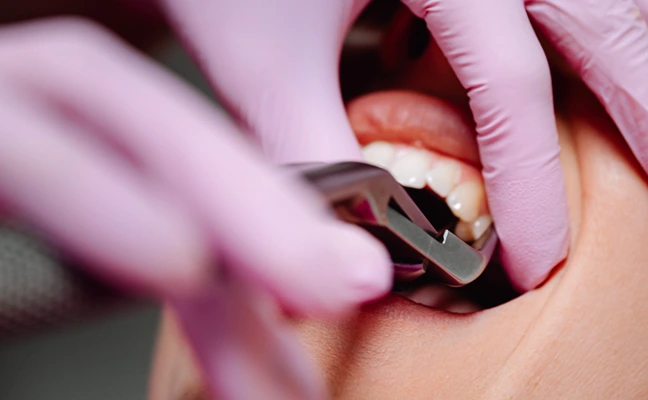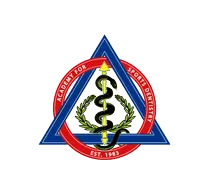Tooth Extractions in Lake Forest, CA

As dedicated dental professionals, our primary objective is to support you in achieving a healthy life with your natural teeth intact. However, there are situations where saving a tooth becomes unfeasible. Tooth extraction may be necessary due to factors such as crowding, disease, or trauma. Regardless of the reason, we approach all tooth extractions with a conservative mindset. While the term "oral surgery" may sound intimidating, most extractions are routine procedures. Our experienced dentist will perform the procedure with expertise, ensuring a comfortable recovery and optimal outcomes.
The Consequences of Untreated Tooth Extraction:
When a tooth requiring extraction is left untreated, it can lead to various complications, including pain, infection, and other dental issues. However, undergoing tooth extraction doesn't have to be a daunting experience. With the guidance of our skilled professionals, the process can be managed effectively and with minimal discomfort.
Understanding Tooth Extraction:
One of the most commonly known types of tooth extraction is the removal of wisdom teeth. Due to their potential to cause problems with neighboring teeth and susceptibility to infection, wisdom teeth are often extracted before or after they emerge. Other reasons for extractions include severe tooth decay, damage, infection, improper eruption, gum disease, creating space for orthodontic treatment, or side effects from medications or treatments.
Determining the Appropriate Extraction:
Before proceeding with tooth extraction, we will conduct X-rays to evaluate your specific case. If extraction is deemed necessary, a local anesthetic will be administered to numb the tooth and the surrounding area. For patients who experience anxiety, dental sedation can be employed to enhance comfort. It's important to note that if sedation is used, arrangements should be made for transportation as you will not be able to drive yourself home.
Simple Extraction Process:
A simple extraction refers to the straightforward removal of a visible tooth within the mouth. The objective is to lift the entire tooth out of its socket. To achieve this, the dentist widens the socket to facilitate easy removal. By gently manipulating the tooth with an elevator instrument, the socket is expanded. Once the tooth becomes sufficiently loose, forceps, similar to pliers or tweezers, are used to extract it. Although you may experience some pressure during the extraction, rest assured that local anesthesia will prevent any pain. Following the complete removal of the tooth, the dentist will cleanse the empty socket and apply medical gauze to control any bleeding.
Surgical Extraction vs. Simple Extraction:
There are two main types of tooth extractions: simple extractions and surgical extractions.
Simple extractions are minimally invasive procedures performed on teeth that are fully visible in the mouth. These extractions do not require the manipulation of surrounding bone or gum tissue.
Surgical extractions are more complex and involve teeth or tooth fragments that are located below the gumline. In such cases, the dentist or oral surgeon may need to manipulate or remove gum or bone tissue to access and extract the remaining tooth fragments. This procedure requires the creation of a small incision and the lifting of gum tissue to expose the jawbone. Occasionally, a small amount of bone removal is necessary to extract stubborn tooth fragments. Stitches may be required following a surgical extraction, and pain medication may be prescribed for post-operative comfort.
Post-Extraction Care:
The aftercare following a tooth extraction is crucial for successful healing. Whether a simple or surgical extraction, it is essential to diligently follow the instructions provided by your dentist or oral surgeon. Failing to care for the tooth socket properly can impede the healing process.
After tooth extraction, a blood clot forms in the empty socket to facilitate healing and stop bleeding, similar to a scab. Protecting this blood clot is paramount. It is vital not to touch or disturb it. Additionally, for approximately three days following the extraction, avoid activities such as smoking, using straws, spitting, or blowing your nose, as they can generate pressure that may dislodge the blood clot and lead to a dry socket. If a dry socket occurs, characterized by pain, it requires immediate intervention. In such cases, please contact us promptly.
With proper adherence to post-extraction care instructions, the major healing process typically occurs within one to two weeks following the procedure. However, after a tooth extraction, you may notice changes in your jaw, as teeth and the jawbone can shift in the absence of the extracted tooth. To prevent these changes and preserve dental health and quality of life, options such as dental bridges or implants can be considered for replacing the missing tooth. Feel free to reach out to us for further information on tooth replacement options.
Conclusion:
Tooth extractions in Lake Forest are conducted with a conservative approach to safeguard your dental health. While our goal is always to preserve your natural teeth, there are instances when extractions become necessary. By placing your trust in our experienced professionals, you can expect a comfortable and successful extraction procedure. Post-extraction care is crucial, and adherence to aftercare instructions ensures optimal healing. For tooth replacement options or any further inquiries, please do not hesitate to contact our practice. We are here to provide you with exceptional dental care and help you maintain a healthy and confident smile.





